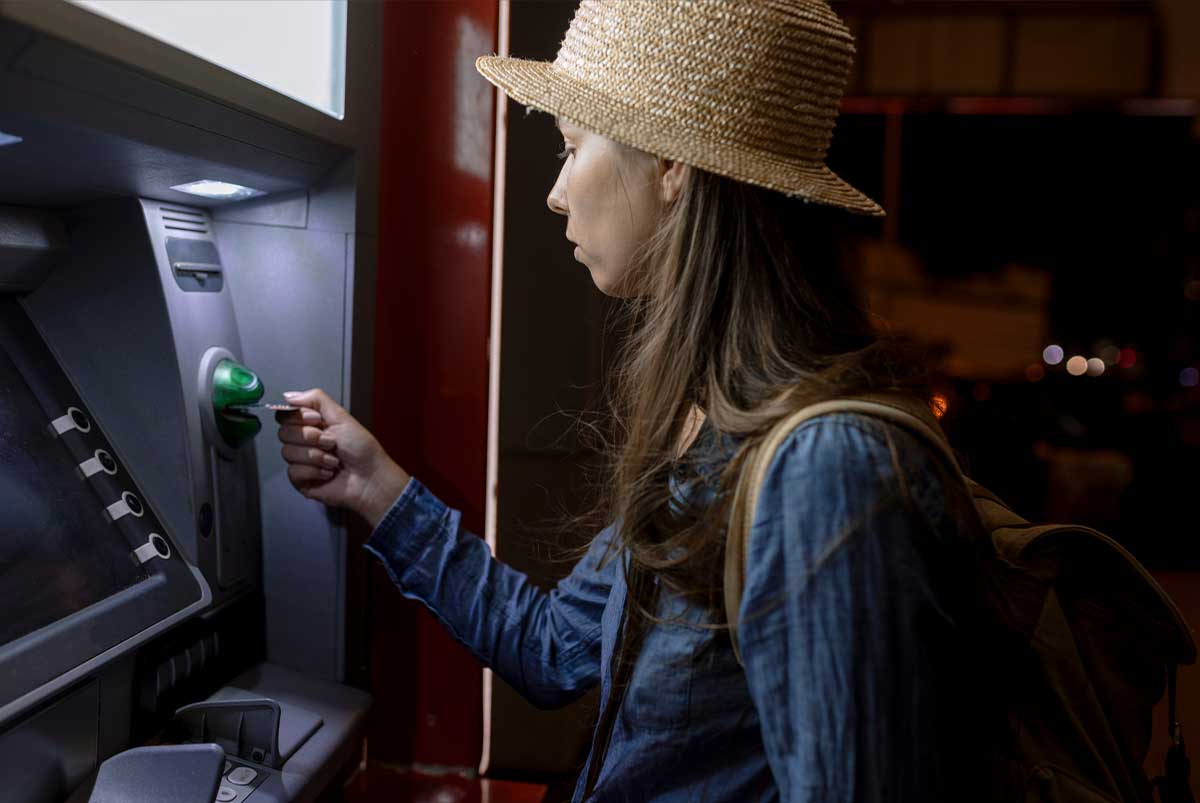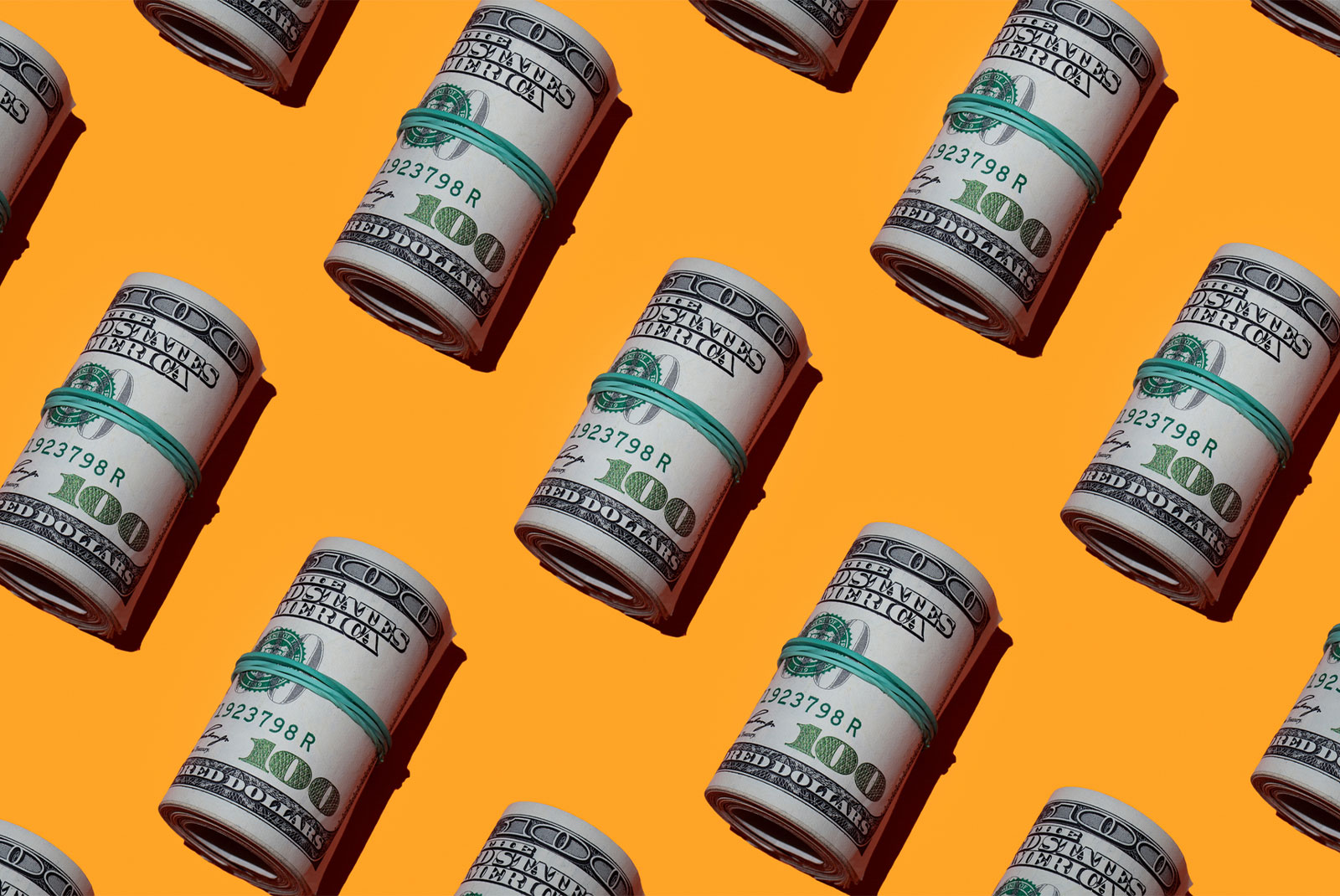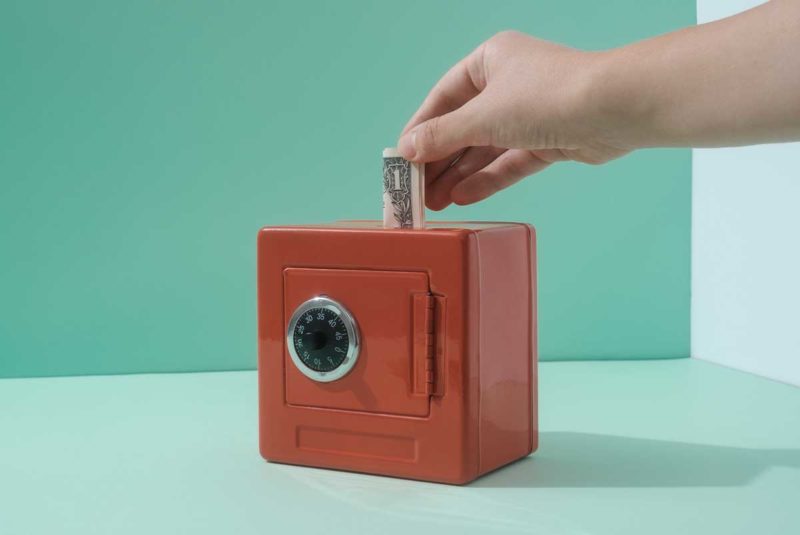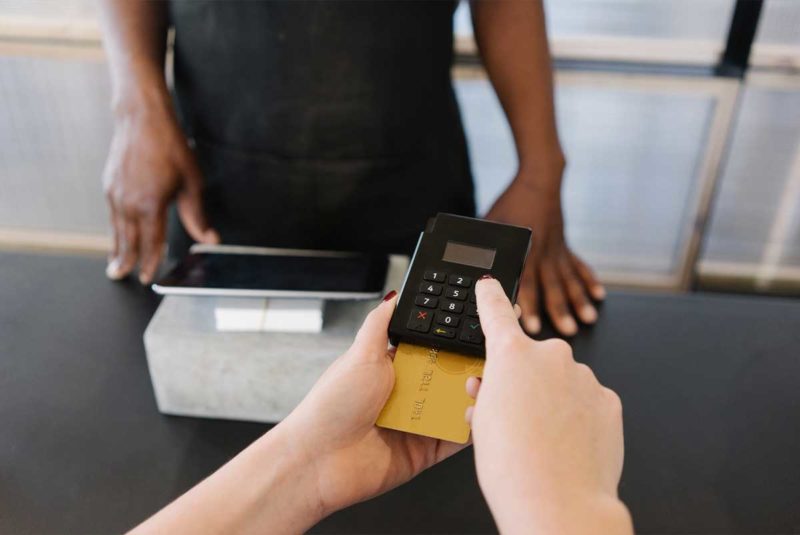You may be asking yourself “Can I get cash out of the ATM with my credit card?” Yes! Most credit cards will let you withdraw cash at an ATM.
Great news, right?
No way!
Borrowing money on your credit card is a cash advance, and it’s worlds away from a simple debit card cash withdrawal. Cash advances are a type of short-term loan. And cash advances usually come with very high fees and a high interest rate. Additionally, cash advances can signal to lenders during a credit check that you’re irresponsible with money.
It’s probably in your best interest to avoid using anything but your debit card with an ATM.
But if you’re positive you need a cash advance right this instant, follow our step-by-step instructions. We also strongly recommend you understand exactly how a cash advance works, and why it’s a bad idea. We’ll walk you through both points in this article; we’ll also let you know about some good alternatives to cash advances like bank balance transfers, personal loans and more.
What Is a Cash Advance?
When you use your credit card to withdraw cash at an ATM, it is a cash advance, which is a short-term loan from your credit card company. You can get a cash advance at most ATMs or at a financial institution like a bank or credit union.
For the most part, credit cards are used to make purchases; typically, you can charge as much as you want up to your credit limit. With a cash advance, you use your credit card to borrow part of your credit limit as cash instead of for a purchase.
Naturally, there’s a limit to how much money you can withdraw with a cash advance. You should be able to find it in your card’s terms alongside other credit limit details.
In a sense, getting a cash advance is like buying cash using your credit card. But it’s very expensive cash. (Read on for why.)
Reasons Why Cash Advances Are a Bad Idea
In general, cash advances should be avoided unless it’s an emergency. Here are some reasons to avoid using your credit card for a cash advance:
High transaction fees
You’ll usually have to pay a fee based on the amount of the cash you borrow. The terms on your credit card agreement usually say something like, “either $10 or 5% of the amount of each cash advance, whichever is greater.” That means you’ll be charged a flat rate of $10 when you borrow up to $200, or 5% of the amount you borrow if it’s over $200.
No grace period
When you make a purchase on most credit cards, the credit card company won’t start charging interest right away. A credit card cash advance is different. When you borrow cash from your credit card company, they start charging you interest immediately, so the finance charges add up quickly.
High interest rates
Though they’re usually not as high as certain alternatives like payday loans, the annual percentage rate (APR) on cash advances is usually much higher than it is for normal credit card purchases. An APR of around 25% is not unusual. Remember, there’s no grace period, so you’ll start getting charged interest at this high rate immediately.
Bad sign for lenders
If your credit card company sees you’re using cash advances, you could get flagged as a risky borrower according to their risk models. If they see you as risky, you might not be able to get higher lines of credit or good terms with that bank in the future. They might even apply a higher interest rate to your balance going forward, or even close your account in certain circumstances, such as if you’ve had a history of not paying on time.
Reduced credit utilization
Your cash advance balance adds to your credit card debt. This debt shows up on your credit reports as credit utilization. Generally, the higher your credit card debt is compared to your total available credit, the lower your credit scores will be. If you already have high balances on your credit cards compared to your credit limits, then cash advances can have a big negative impact on your credit scores.
How Do I Get Money From an ATM With a Credit Card?
Nearly every credit card allows you to borrow cash with cash advances. But as we’ve discussed, it is generally not a good idea, and your future self will probably thank you if you don’t.
But if you’ve made up your mind, or it’s an emergency, we’ll walk you through each step of the process:
Think about other options
At the risk of sounding repetitive, we strongly discourage cash advances. Instead, consider other options like credit cards with 0% purchase APRs and low-APR personal loans. (We’ll discuss these in more detail later.)
Check to make sure your card allows cash advances
Consult your card’s terms, check your online dashboard or a statement for your cash advance limit, or call the phone number on the back of your credit card to find out.
Check your cash advance limit
Make sure you know how much cash you’re allowed to withdraw through a cash advance. You can usually see this on a statement, or you could call the phone number on the back of your card. There may also be a daily cash advance limit.
Check your credit card statement. If you see a cash advance credit line or cash advance credit limit, that’s the maximum amount of cash you can take out. It’s important to know what this is so you don’t try to withdraw too much. The credit limit for cash advances is usually smaller than your card’s credit limit for regular purchases.
Find or set your PIN
Your personal identification number (PIN) may have come in the mail close to the same time you received your card. If not, you will probably have to request it from the credit card issuer. Just log into your credit card account online or call the phone number on the back of your card. In some cases, it can take 7 – 10 business days to get the PIN set up.
Understand the terms and fees for cash advances on your card
Cash advances can be costly, so it’s best to know what you’re in for ahead of time. You can find the terms and conditions with your credit card agreement or online. Or you can call the credit card company.
Think about your repayment plan
Figure out when you’ll pay back the cash advance, and do the math to figure out how much extra money you’ll be paying for the cash you’re getting.
Get the cash advance
If you’ve decided to go through with it (don’t say we didn’t try to convince you otherwise!), find an ATM, insert your card, and enter your PIN when prompted. Rather than selecting “Checking” or “Savings” as you usually would with a cash advance, you should be able to pick another option, like “Cash Advance” or “Credit Card.” Remember that you might get charged a fee for using the ATM (on top of the balance transfer fee) if it’s in a different network than your financial institution.
Pay back the cash advance as soon as you can
It will start accruing interest charges immediately, so if you don’t start making card payments right away the debt could snowball out of control.
Example Cash Advance Scenario
Let’s do the math for a hypothetical cash advance.
Here’s what’s happening with this example:
- You are doing the cash advance on the first day of your billing cycle, which is a 30-day cycle.
- The cash advance APR of your card is 24.99% (this is a typical Cash Advance APR).
- The cash advance fee part of your cardholder agreement says “Either $10 or 5% of the amount of each cash advance, whichever is greater.”
- Your credit card company compounds interest on cash advances daily.
So, you withdraw $1,000 at an ATM with your credit card on the first day of your billing cycle.
Right away, you’ll get hit with that cash advance fee. Since 5% of $1,000 is $50, and that’s greater than $10, you immediately owe $1,050. You may also have to pay an ATM fee if the ATM isn’t in your bank’s network, adding a few bucks to the amount owed.
If you wait until the end of this billing cycle before paying any of it back, how much will you owe?
The APR is an annual interest rate. Since the APR is 24.99%, you can get the daily interest by dividing the APR by the number of days in the year: 0.2499 divided by 365 equals .00068.
So the daily interest rate is 0.068%.
This means for every day that passes, you will be charged an additional 0.068% of the total amount you owe on top of what you already owe.
That may sound like a low percentage, but by the end of your first 30-day billing cycle, you would owe an extra $19.91 just in interest. When you add that to the cash advance fee and the amount you borrowed, you’d owe a total of $1,069.91 by the end of the month.
So, for that $1,000 of cash you withdrew, you end up paying an additional $69.91 in interest and fees after only one month.
Cash Advance Alternatives
You’ve probably noticed that we don’t advocate for the cash advance. Sure, the service is useful if you’re really desperate, but there are enough other options that you’re probably better off looking elsewhere.
We’ve collected a few alternatives below. Not every method will work in every situation, but you should be able to find something that meets your financial needs.
Conduct a bank balance transfer with a 0% APR card
Bank balance transfers are an option that’s easy to overlook.
Here’s the idea, ideally:
You apply and are approved for a credit card with a 0% balance transfer APR offer. Then, you request a balance transfer with the card issuer.
Instead of simply transferring a balance from one card to the other, however, the issuer sends cash directly to your bank account and treats it as a balance transfer.
That amount becomes the card’s balance, and you pay it off at the balance transfer APR. A 0% APR offer makes that a pretty sweet deal, right?
You’ll have to wait for the transfer to process, of course, and that could be a detriment if you need the money ASAP.
Get a personal loan
Personal loans charge interest, just like cash advances. The key difference is that even if your credit is average at best, you can probably still get a personal loan at a much lower interest rate than a cash advance.
You may have to pay an origination fee to take out a personal loan, but that’s not always the case. Look for loan options without this type of fee if you’re really trying to come out on top.
The main downside here is that a personal loan is considerably less accessible than an ATM cash advance, especially if you’re nowhere near a bank and need money immediately.
Borrow the money
If there’s someone you trust like a close family member, consider asking to borrow the cash you need. In spite of the initial discomfort you may feel, borrowing could save you a lot of money you’d otherwise have to shell out for fees and interest charges.
Use your checking account
You can usually get money from your checking account even if there’s not actually enough money in the account to cover the withdrawal. This is called overdrawing. You’ll probably have to pay overdraft fees, which can be hefty, but at least you won’t have to pay interest.
You won’t be able to overdraw your bank account if you’ve signed up for overdraft protection.
Weigh Your Alternatives
Yes, you can get cash from an ATM using your credit card, but doing this is a cash advance. There are better options for getting the cash you need. Weigh the alternatives carefully.
The Short Version
- When you use your credit card to withdraw cash at an ATM, it is a cash advance, which is a short-term loan from your credit card company
- Cash advances usually come with very high fees and a high interest rate
- We strongly discourage cash advances. Instead, consider other options like credit cards with 0% purchase APRs and low-APR personal loans




